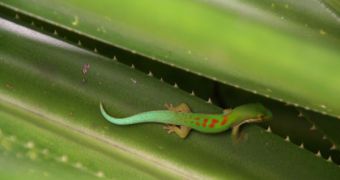It is widely known among experts that smaller animals have a higher metabolic rate, which means that they essentially have to consume more food in order to be able to function. A famous example in this sense is the hummingbird, which has to consume several times its own weight in pollen each day in order to be able to move its wings so incredibly fast. According to a new scientific study, it would appear that, when supporting metabolism, the size of the blood cells truly matters. In fact, it plays a crucial role, LiveScience reports.
When taking body size into account, smaller animals metabolize their nutrients faster than larger sized ones. It would appear that this simple fact is a determining factor in a very wide number of traits in the world as we know it, such as the life spans of individual species, or the dynamics of an entire ecosystem, including all its species. These concepts belong to the metabolic theory of ecology. While this is largely accepted among naturalists and biologists, the reasons why this scaling occurs have been a subject of heated debates for many years.
According to one side of the argument, the scaling occurs because of the size and geometry of the supply networks, including the circulatory system. The scientists arguing for this viewpoint believe that there are only certain amounts of nutrients that can be carried inside small animals. The quantities are believed to be insufficient to sustain the creature and therefore appear to be metabolized faster. On the other hand, different experts argue that cell size is the main factor determining metabolism.
Charles University in Prague graduate student Zuzana Starostova, together with four colleagues, decided to investigate the matter in more depth, and analyzed the sizes of red blood cells (a clear marker of cell sizes in any body) from 14 gecko species. The team also measured the resting metabolic rates in all of the species. Though they are part of the same species, the eyelid geckos vary greatly in size, with the largest one weighing about 32 times more than the smallest one. The study determined that the larger the gecko, the larger the blood cells were, and the slower the metabolism.

 14 DAY TRIAL //
14 DAY TRIAL //